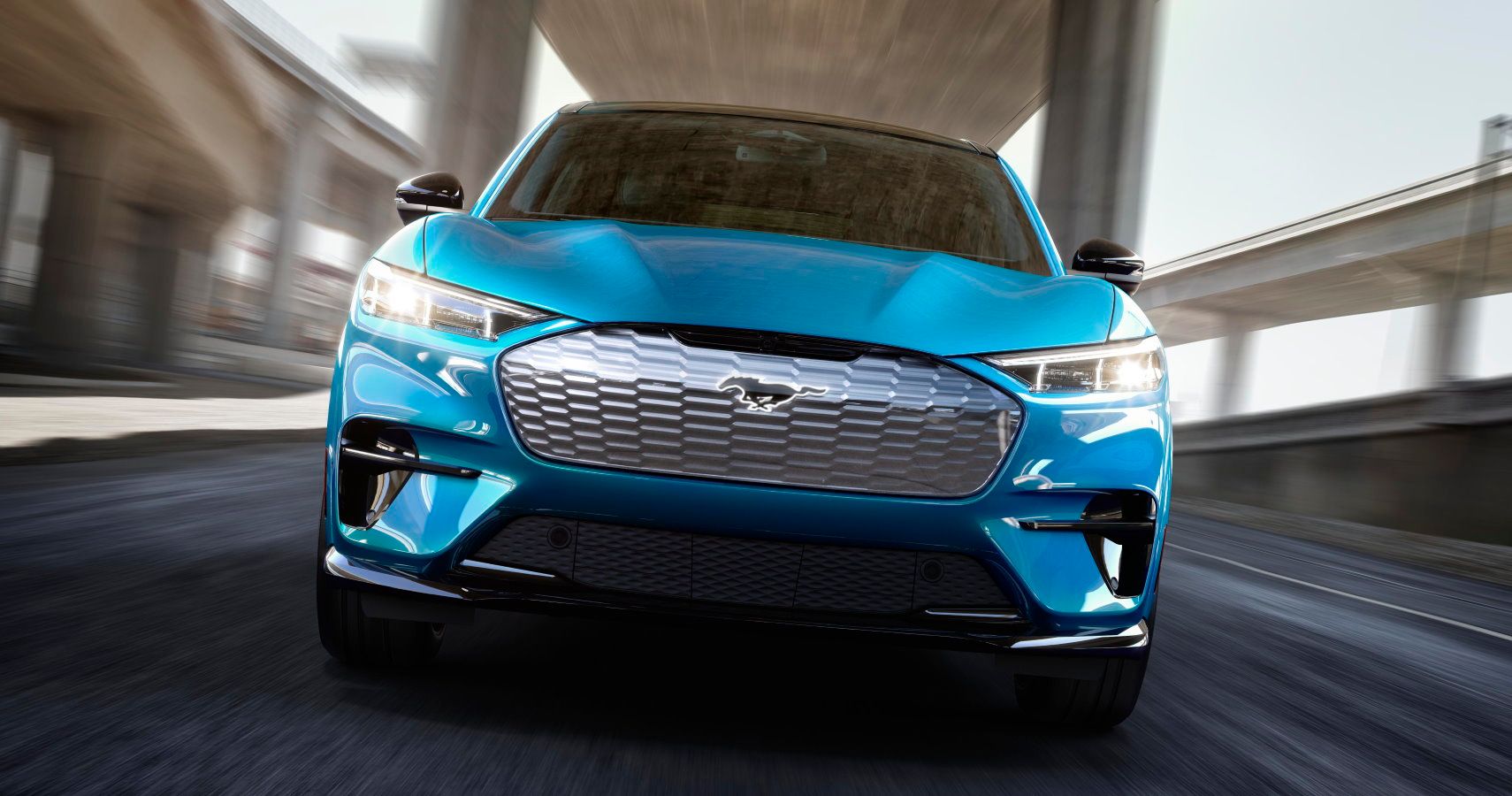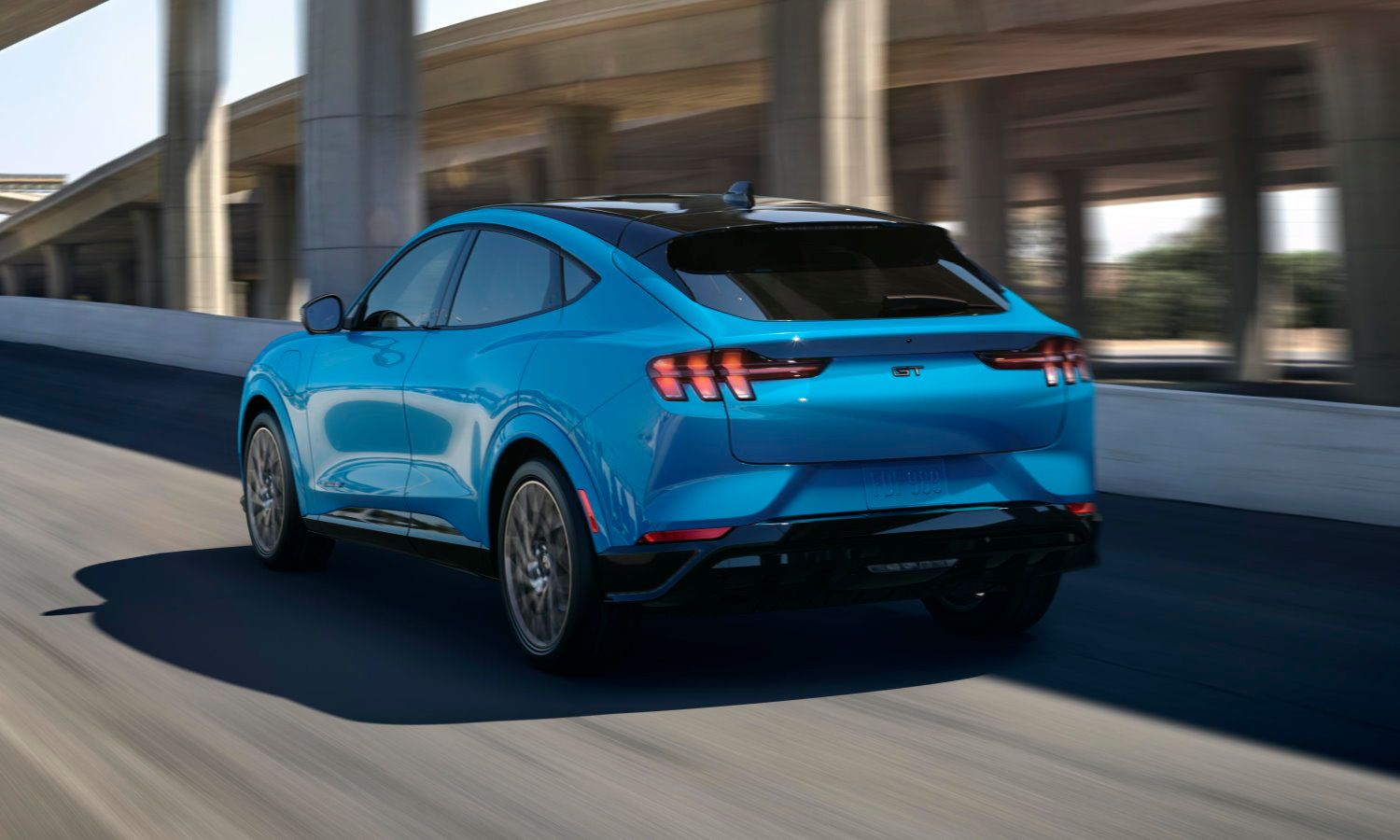So what’s under the new Ford Mach-E’s hood? Let’s take a look.
First of all, there’s nothing under the hood. It’s actually a front trunk that you can use to store a cooler or similarly sized piece of luggage. The moving components on the Mach-E are all further down.
On the floor of the Mach-E is the battery back, which comes in either 75.7 kWh for the standard range or 98.8 kWh for the extended-range model. That’ll give the Mach-E anywhere from 230 to 300 miles of range, according to Ford's estimates.
Then comes the electric motors, which again depends on the style of Mach-E. Ford’s first electric crossover can come in either rear-wheel or all-wheel-drive configurations, and like other electric carmakers, this means either one or two electric motors. In RWD, just a single electric motor on the rear axle is present, and in AWD you get two electric motors with one on each axle. This is comparable to how Tesla and other manufacturers set up their electric cars.
Every Mach-E has a rear electric motor that produces 306 lb-ft of torque and either 255 or 286 horsepower, depending on the trim. AWD Extended Range models get another, smaller motor on the front axle, while Performance trims get the same-size motor on both the front and rear axles for a combined 459 hp and 612 lb-ft of torque.
There's no transmission on the Mach-E, so all that power is fed directly to the axles. According to Autoblog, the Mach-E also doesn't have torque vectoring. It will use the brakes instead to keep the car steady via the traction and stability control system, although each motor can be running at different power depending on the needs of the vehicle.
The current "default" power setting is 30% front and 70% rear to give it a sporty rear-wheel-drive feel, but there’s nothing stopping both motors from putting out power equally or swapping to a more front-wheel-drive weighting if it’s required. We’ll learn more about how power hits the pavement in the Mach-E when it arrives later in 2020.
(Source: Autoblog)


